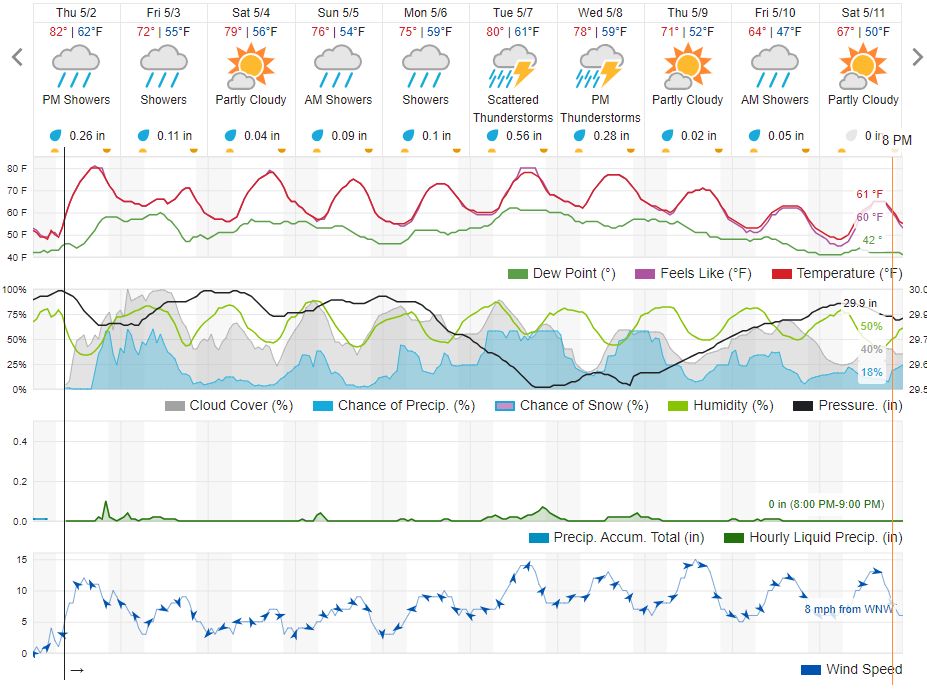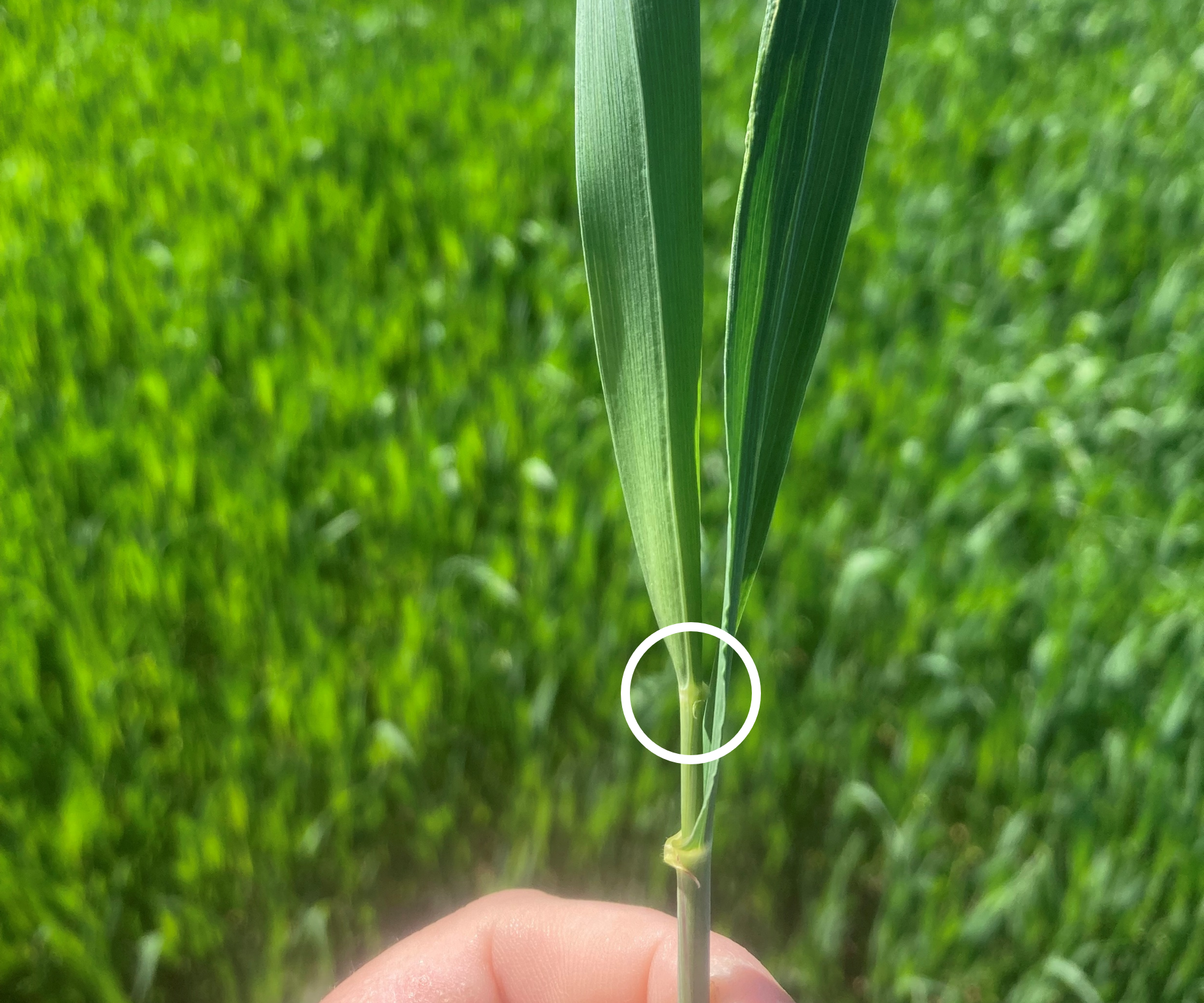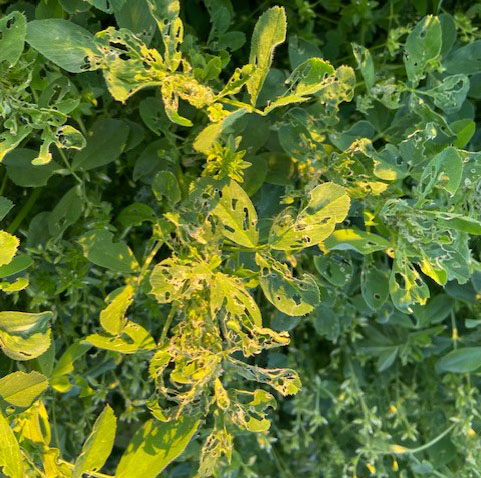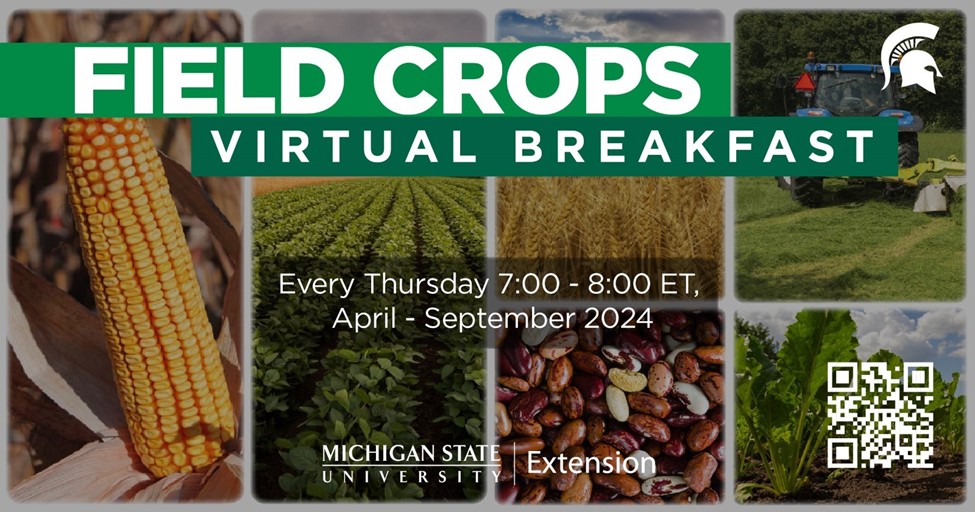Southwest Michigan field crops update—May 2, 2024
Weekend precipitation slows down planting, cultivation and fertilization. Alfalfa weevil feeding is prevalent and true armyworm flights have picked up in Sturgis.

Weather
This week is expected to be wetter and warmer than normal. Two big weather systems will be passing through Michigan this week, one starting tonight into tomorrow (Friday, May 3), and the other expected to hit late Monday and run into early Wednesday. Both will bring cloudiness and significant precipitation of 0.25 – 0.5 inch or more. Southern Michigan will possibly receive more rainfall than the rest of the state. Temperatures will continue to be about 5 to 8 degrees Fahrenheit above normal.


Crops and pests
Soybean and corn planting halted early this week but picked up yesterday and is expected to continue until rain hits. Close to 10% of soybeans have been planted, and corn is about half that. By and large, fields have been too wet for cultivation and planting. With only short windows to plant this week, Michigan State University Extension soybean specialist Mike Staton warns not to “mud in” the crops. Make sure the soil is sufficiently dry before planting. Compacting the soil will not help the crop. He encourages maximizing planting capacity. In some cases, this means tending multiple pieces of equipment (precision planter, box drills, etc.) if you can.
Most winter wheat is at Feekes 8, meaning the last leaf, or flag leaf, is emerging but has not yet formed the ligule, although they are well on their way to Feekes 9, and some have already reached Feekes 9, which is when a ligule is visible on the flag leaf. Feekes 8-9 are important management stages for fungicide applications. The flag leaf is a huge photosynthetic contributor to grain fill, so diseases or insects that affect it are particularly harmful.
.png)
Potato planting halted over the weekend and most of the week, only picking up again yesterday. A good day or two is all that is needed to finish planting. However, with significant precipitation in the forecast, opportunities to plant over the next week may be limited.
Alfalfa weevil is feeding in southwest Michigan. With the possibility for an early cutting low in most fields, some insecticide applications have been going out. Scout your fields for larvae and signs of feeding. Early damage appears as small holes in the upper unfolding leaves. Severe damage has a lacy appearance in the upper leaves.

Michigan State University (MSU) insect specialist Chris DiFonzo encourages picking areas and rating how many stems have feeding. It is likely that your eyes will be drawn to more severe damage, so make sure to choose representative spots in the field. At 12-16 inches, an insecticide should be applied if there are two or more larvae per stem. At 16 inches or taller, the threshold for treatment is four alfalfa weevil larvae per stem. The recommended control is early cutting in order to preserve beneficial biological controls in the canopy. As plant height increases, the economic impact of alfalfa weevil decreases. Take plant height into account in addition to larvae populations when deciding to treat or not.
Black cutworm moths are present in the state. Bucket traps in Berrien (near Berrien Springs) and St. Joseph counties have caught the following:
|
Date |
Berrien |
Centreville |
Sturgis |
|
4/8 |
0 |
2 |
1 |
|
4/15 |
0 |
12 |
4 |
|
4/22 |
0 |
16 |
3 |
|
4/29 |
4 |
10 |
3 |
|
Total |
4 |
40 |
11 |
True armyworm moths are present in the state with significant flights in Sturgis. Bucket traps in Berrien (near Berrien Springs) and St. Joseph counties have caught the following:
|
Date |
Berrien |
Centreville |
Sturgis |
|
4/8 |
0 |
0 |
0 |
|
4/15 |
1 |
0 |
0 |
|
4/22 |
0 |
0 |
14 |
|
4/29 |
0 |
0 |
20 |
|
Total |
1 |
0 |
34 |

Staging of wheat, corn and soybean and their critical treatment stages was the topic of this week’s MSU Extension Field Crops Virtual Breakfast this week, presented by MSU cropping systems agronomist Manni Singh. He highlighted Feekes 8-9 and 10.5 as critical stages in wheat, V6, R1, R5 and R6 in corn, and R1 and R3 in soybeans. Recordings of this and all the Virtual Breakfast meetings are closed-captioned and available at the Field Crops Virtual Breakfast webpage and the MSU Extension field crops team social media platforms: Facebook, Spotify, YouTube, Apple Podcasts and Twitter.



 Print
Print Email
Email




